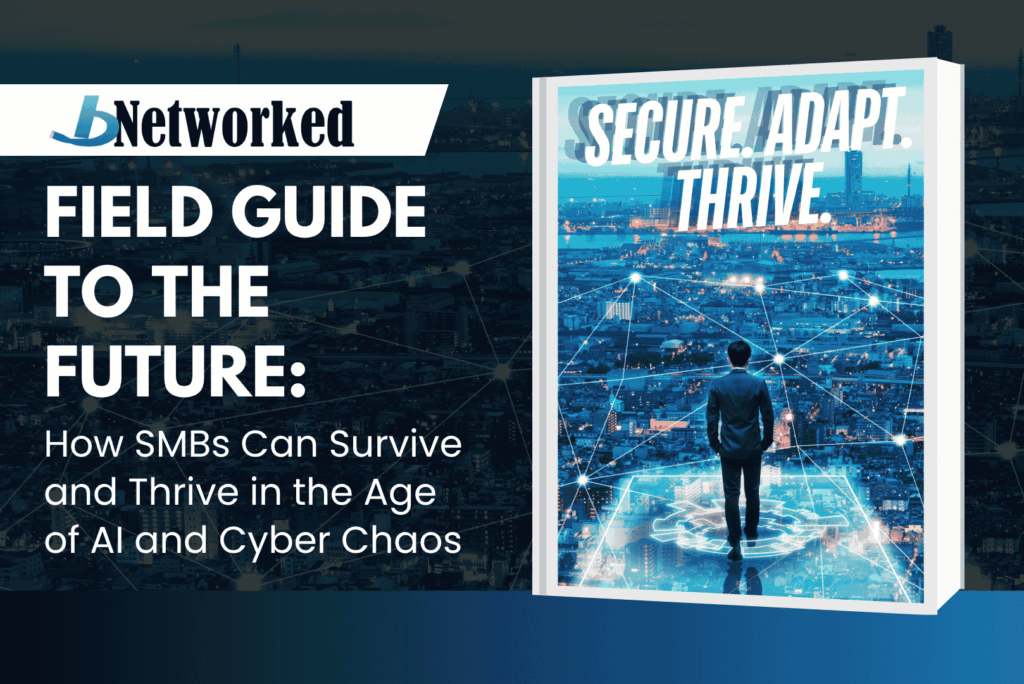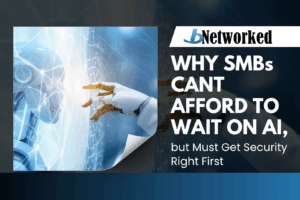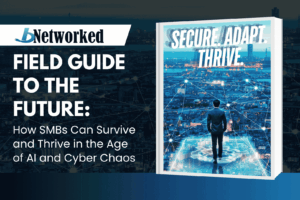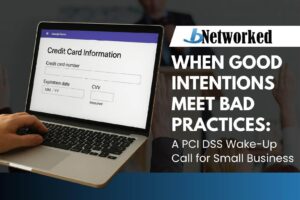1. Introduction: A Wake-Up Call
Let’s be real.
You’ve built something meaningful: a business, a team, a legacy. You’ve made hard choices. You’ve weathered downturns, pandemics, and possibly even ransomware scares. But what’s coming next is something entirely different. We haven’t faced this kind of shift in decades.
A digital tsunami is on the way.
AI isn’t just the latest tech trend. It’s a powerful force already reshaping industries quietly and consistently. The biggest concern? Most small business leaders don’t realize how close the wave already is.
Being compliant is no longer enough. Having antivirus isn’t enough either. Sticking to the strategies that worked five years ago will not keep you competitive or secure.
Somewhere out there, someone is analyzing your industry with machine learning, figuring out how to undercut you, outperform you, or render your business obsolete.
This is not a scare tactic. It’s an honest observation based on patterns we’re already seeing.
This guide focuses on what’s real. It avoids hype and empty buzzwords. You’ll get a clear view of what’s happening, what’s next, and how to prepare your business to not only survive, but lead in the middle of this chaos.
2. What Happens If You Stay the Same
People: You’re constantly putting out fires, always reacting rather than leading. Your team is burning out, taking shortcuts just to get through the day. Those shortcuts create gaps, and those gaps are exactly where attackers break through. A fake FedEx email isn’t just a nuisance. It could be the opening that leads to a major breach.
Process: If “this is how we’ve always done it” sounds familiar, you’re at risk. This mindset leads to security gaps, lost data, and the loss of critical knowledge when experienced employees leave. Without policies, standard procedures, or response plans in place, even a sick day can throw the team into disarray. A cyber incident can become a full-scale crisis.
Technology: Thinking you’re fine because you have antivirus is a dangerous assumption. Today’s threats use AI-powered phishing, misused admin privileges, and outdated security tools to gain access. When Nova Scotia Power was hit, they lost billing access for six weeks. Ask yourself honestly—how long could your business hold up?
3. What Future-Ready Actually Looks Like
People: You’re no longer managing IT alone. A strategic technology partner, like a virtual CIO, is helping you plan and lead. Your team receives training and support and understands how their actions affect business risk. AI is no longer a wild card. It becomes a valuable tool that enhances your people rather than overwhelming them.
Process: Your policies and workflows are well documented and embedded in daily operations. They’re not just paperwork; they are living tools. AI helps build and maintain them. If someone calls in sick, operations keep running smoothly because the process is clear and repeatable.
Technology: Your systems are secure by design. You’ve implemented managed detection and response (MDR), endpoint detection and response (EDR), conditional access, segmented networks, AI-based email security, cloud protections, and traffic monitoring. If something fails, the system alerts you immediately and experts act quickly. Security is not an afterthought—it’s a core function.
This future-ready setup is achievable. And it’s essential.
4. The AI Opportunity (and Risk)
AI is already part of your business, whether you realize it or not. Your team uses it in searches, email, messaging, and even personal apps. Free tools like ChatGPT can inadvertently expose confidential business data online. This isn’t theoretical—it’s already happened.
But there’s another side to this story.
Used correctly, AI can:
- Spot inefficiencies in your operations
- Handle repetitive tasks automatically
- Uncover new market insights from your data
- Support customer service without losing the human connection
With proper guidance, AI can enhance your team’s capabilities. And with the right boundaries, it can give you a competitive edge without increasing your risk.
5. Leadership in the Age of Acceleration
Successful leaders are shifting their mindset. They no longer ask, “Will AI impact us?” Instead, they ask, “How can AI help us work smarter?”
AI is not the enemy. It’s a strategic partner, a thinking companion, and an around-the-clock assistant.
The real change in leadership is this: stop trying to know everything yourself. Start learning how to guide your team through smart adoption. Become the one who asks the right questions, sets the right boundaries, and ensures technology is used with purpose.
Security by design isn’t just a technical phrase—it becomes the way you lead. Purpose and clarity become your competitive advantages.
6. The Call to Action: Start Now
The most important step is deciding to take action.
Every day you delay, the gap between early adopters and late responders grows wider. Your competitors are already experimenting with AI tools, improving their processes, and reinforcing their security.
Let’s talk. We can take a close look at your operations, pinpoint the weak spots, and build a practical strategy to help you lead with confidence.
The best time to take action was last year.
The next best time is right now.









